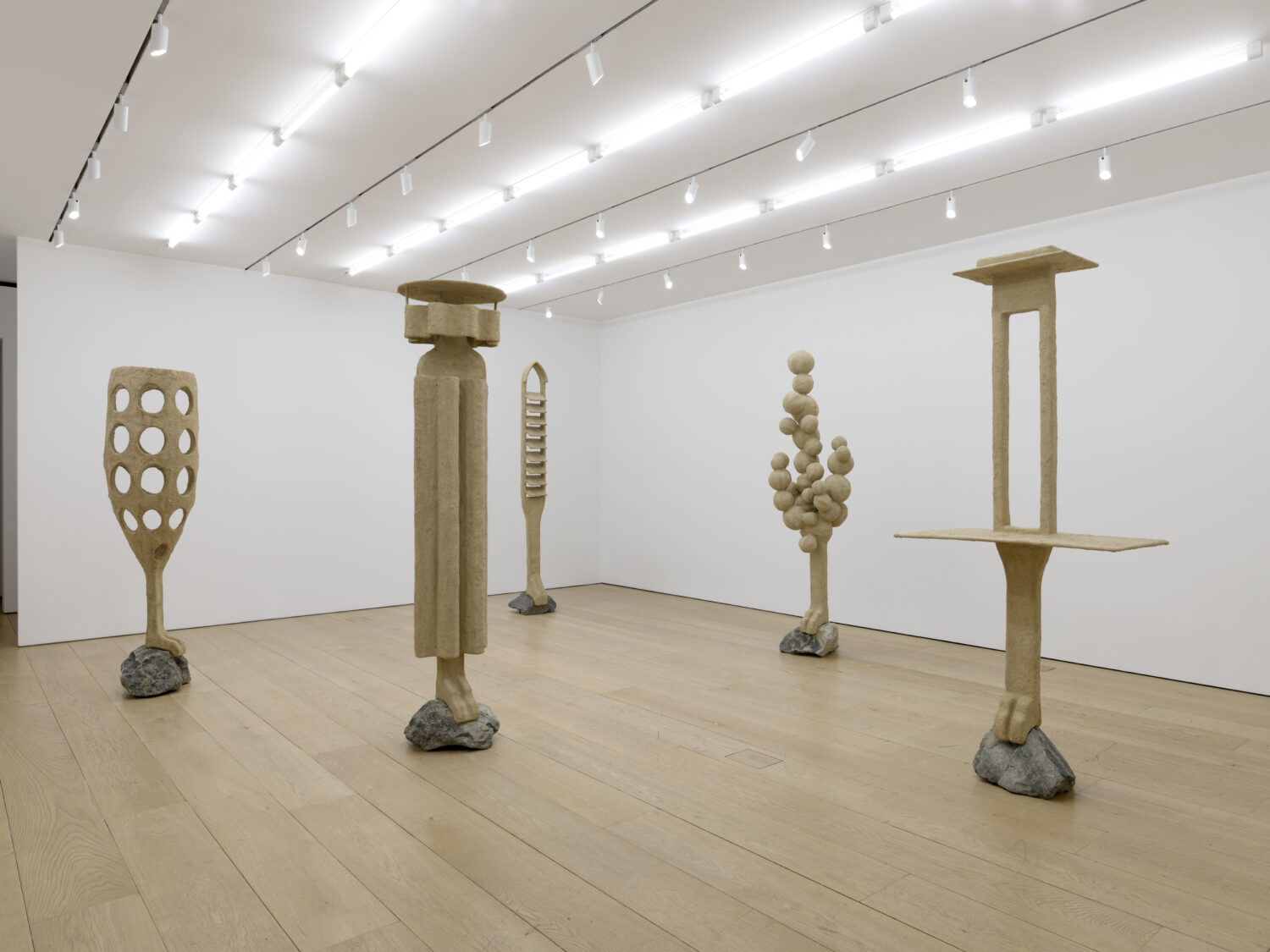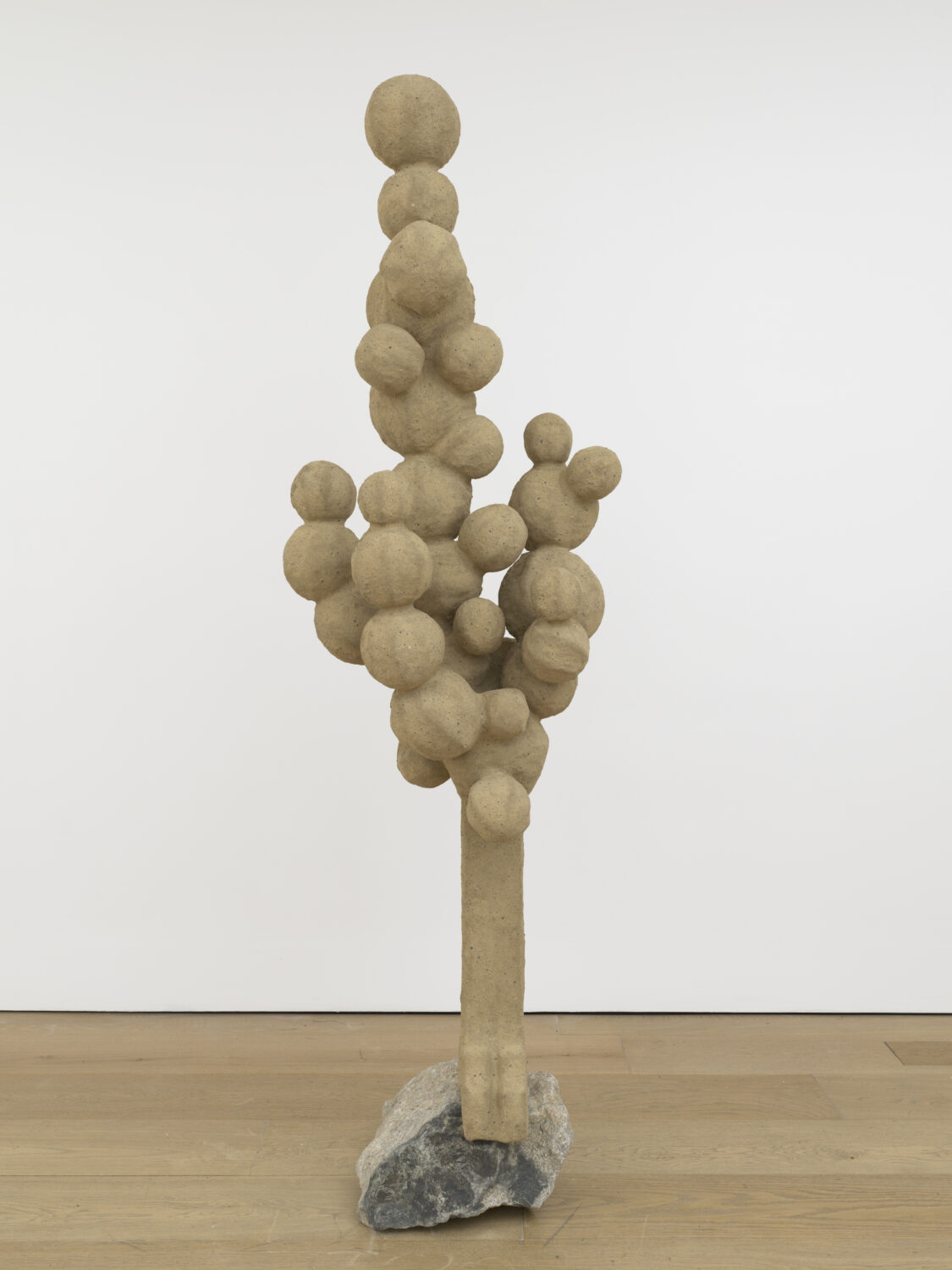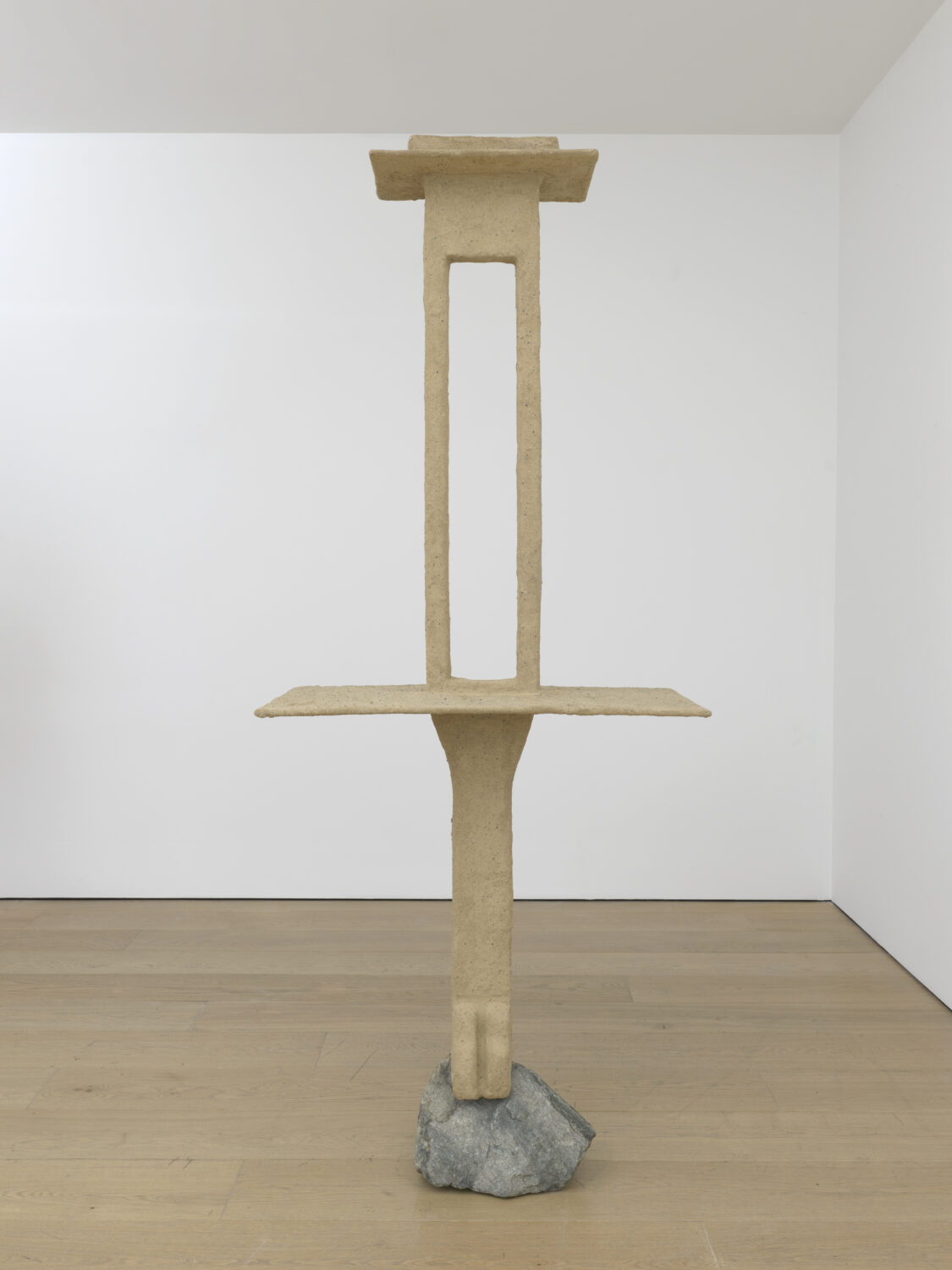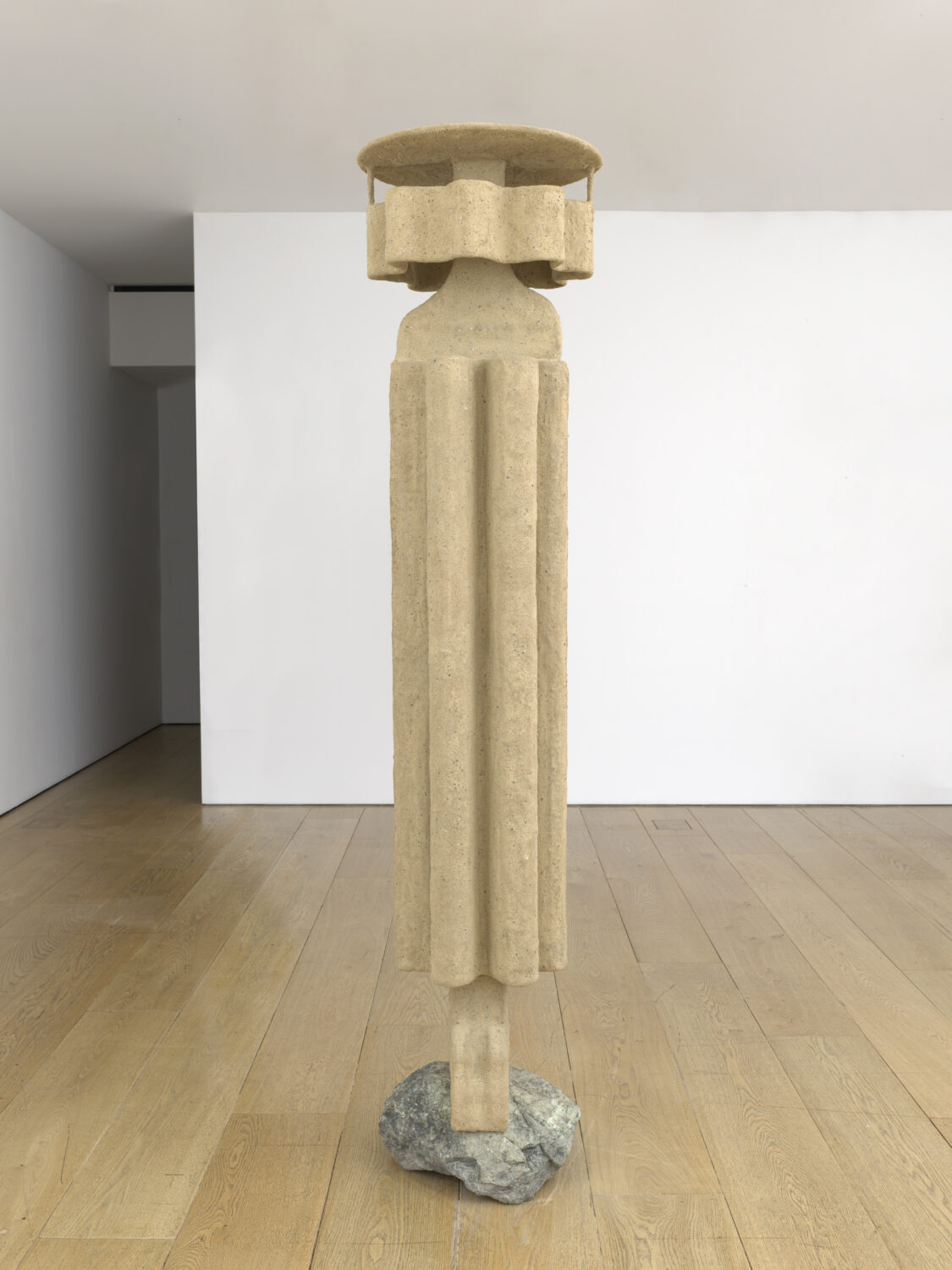Interview: Sculptor Oren Pinhassi on Architecture, Eroticism and the Generosity of Human Labour
By Keshav AnandNew York-based artist Oren Pinhassi creates sensuous sculptures and large-scale installations that explore the politics of architectural spaces as they relate to the human body. His anthropomorphic works, often standing up to eight feet in height, examine individual vulnerability and fluidity within the built environment, probing new possibilities for coexistence. Mimicking familiar images—such as a palm tree, a shower, or a chaise lounge—Pinhassi’s sculptures break down binary categories between people and objects. Coinciding with his first exhibition with Lehmann Maupin gallery in New York, open now and on view until 12 October 2024, Something Curated’s Keshav Anand spoke with Pinhassi to learn more about his practice and the new show.

Keshav Anand: How do you see your sculptural practice expanding or challenging traditional notions of public and private spaces?
Oren Pinhassi: My sculptural practice aims to take inspiration from objects like public furniture or architectural structures, which are often designed to separate and delineate between bodies or between bodies and their environment, and to transform them into objects that instead foster an erotic and vulnerable exchange. Through my work, I want to collapse boundaries between self and other, between the body and architecture, and instead create objects and environments that exist somewhere in flux, or in between. The body becomes architecture, landscape, and vice versa. This requires a degree of vulnerability, so in that sense, I want to take something intimate and private and create a new environment that utilises familiar elements to disarm fear and instead construct a space for public exchange—what we know from our private, intimate moments becomes public. The cavities in my work—windows, holes—simultaneously reference the most intimate cavities of the body and, as recognisable architectural elements, become landscapes for this public exchange.
KA: Your work blurs the lines between objects and living forms. What interests you in simultaneously exploring the inanimate and animate?
OP: The inanimate and the animate affect each other in a symbiotic relationship, and I’m interested in this environment of co-creation. The inanimate—architecture, furniture, etc.—is constantly constructing us, constructing and shaping our spirits and our bodies as we move through the world. There is a fragility and dependency that emerges from this relationship that I’m interested in capturing and fostering through my work… we tend to think of inanimate objects as passive, I hope to create work and to create installations that heighten our awareness of this co-creation that undergirds our world.

KA: What draws you to the organic materials you work with, like sand, plaster, and burlap?
I’m drawn to working with organic materials because of the connection they hold to our ephemeral human nature, and because natural materials are often embedded with the histories of both man-made construction and of the natural world. Sand reminds us of our fragility and the temporality of our bodies—it is the dirt we will return to when we die. At the same time, it is a mythic material from which—in some religious traditions—humans are told to have been created. So there is a certain creativity in sand too, a possibility to shape form and animate matter. It is both the product and an agent of erosion; it can be fertile and tender and give life, but also dry and hot and suffocating. It’s both a building material and the tomb of past civilisations. So in this sense, sand encapsulates the human story of life and death, and so many other things that we often experience as contradictory, in one material.
KA: Can you expand on the role of eroticism in your art?
OP: As you can probably tell now, my work operates under a few different logics for construction, and the erotic, or Erotic Construction is another one of them. I think about it this way—a successful erotic encounter between two people requires a loss of the boundary between self and other, an exchange of physicality, a willingness to open… so to me, this exploration of the collapse of the boundaries between architecture and nature, body and furniture in my work is itself an erotic logic that has the ability to produce a certain tenderness and fragility.

KA: The layering technique you use in your sculptures seems to very intentionally reveal the artist’s hand. How important is this tactile element to your work, and what does it mean to you?
OP: In Saint Peter’s Basilica in Rome, there is a bronze sculpture of Saint Peter’s foot. Through the centuries, visitors have touched and rubbed the foot because they believe this will bring them good fortune and health—it’s a spiritual object in that way, or an object of devotion. But this repetition of touch has completely changed the contours of the sculpture. For me, this evidence of human touch—or in my case the mark of the artist’s hand in my work—has to do with the belief in change through connection and reciprocity. The generosity of human labour is embedded in different ways in objects all around us—architectural objects, art objects—and I like to think that viewers experience the evidence of labour or repetitive touch as beauty in the work. It gives the work a deeply human element and I hope conveys a kind of non-cynical belief in change.
KA: What can we expect from your new exhibition at Lehmann Maupin?
OP: My exhibition Losing Face will have five new sculptures and will be a continuation of my previous bodies of sand-based works, but made under a new framework. In this exhibition I want to turn the phrase “losing face” on its head and make it a constructive proposition: when we strip away some of our individuality and ego, we make room for vulnerability. So my works here require a willingness to relinquish one’s familiar perception of the world or to “loose face,” which becomes another one of these poetic construction logics—the works are born from this place of vulnerability, and they in turn construct the space around them from the same logic, hopefully extending that to the viewer.

KA: Which artists have been most influential on your practice over the years?
OP: I love to find inspiration in pairings—for example, right now I’m interested in the combination of Giacometti’s existentialism and Leonora Carrington’s spiritualism and futurism… or another pairing, Marissa Merz and Janis Kunnellis. But so many artists, both historical and contemporary, have touched and taught me through their work.
KA: What are you currently reading?
OP: Currently, I’m re-reading a book called Breathing: Chaos and Poetry by Franco Berardi, which I see as a manual for the power of poetic logic in a world that is spiralling into chaos. This book brings me to tears, but they are tears of hope.
Oren Pinhassi’s Losing Face is on view until 12 October 2024 at Lehmann Maupin, New York.
Feature image: Portrait of Oren Pinhassi. Courtesy the artist, Edel Assanti, London and Lehmann Maupin, New York, Seoul, and London. Photo by Tom Carter